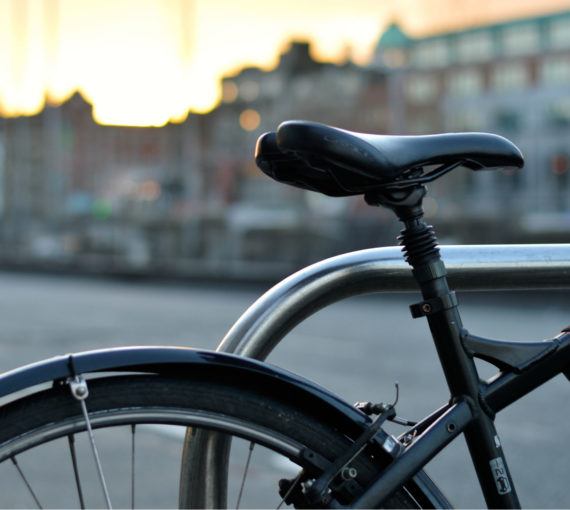
The City of Toronto is currently conducting a “complete streets” study on Danforth from Broadview to Victoria Park to improve safety for all road users. As part of the process, the city is considering installing protected bike lanes in this corridor. (Photo: The City of Toronto via Flickr)
Torontonians make 3,000 daily bicycle trips on the east end’s most important thoroughfare — and not one of them is safe.
If you spend time on Danforth Ave. you know it has no bike lane to keep cars and cyclists physically separate. Riders using the road take their lives in their hands.
Now a solution may be within reach.
The City of Toronto is currently conducting a “complete streets” study on Danforth from Broadview to Victoria Park to improve safety for all road users. As part of the process, the city is considering installing protected bike lanes in this corridor.
We think these lanes make a lot of sense, and that’s not just our view. Cycling is now receiving support from some unlikely places, including one of the world’s most respected consulting firms.
Late last year, Deloitte released its Technology, Media and Telecommunications Predictions 2020 report. It says that by 2022 we’ll see “tens of billions” more bike trips globally each year, translating into “fewer car trips and lower emissions, with spillover benefits for traffic congestion and urban air quality.”
Yes, the global giant Deloitte says getting folks onto two wheels cleans the air and busts congestion!
The company suggests bikes need their own section of the street: “Many people who might otherwise embrace cycling are frightened off by the prospect of sharing a crowded road with big metal vehicles with only a helmet for protection. The good news is that there is plenty of space to reallocate.” Certainly space is not an issue on Danforth; the roadway is wide enough to accommodate both cycle tracks and parked cars.
There’s also good evidence that bike lanes can support business.
Merchants do well when neighbourhoods are thick with shoppers. Deloitte says, “ten bikes can fit into a single standard car parking space.” When they arrive by bike, more customers can be packed in.
A 2019 study from Toronto’s Centre for Active Transportation looked at the economic impact of putting pilot bike lanes on Bloor St. The key finding: “Monthly customer spending and number of customers served by merchants both increased on Bloor St. during the pilot.” The research suggests people who walk or cycle visit Bloor more frequently than drivers, and “[more] visiting affords more opportunities to spend.”
Not surprisingly, when the road was made more attractive for cyclists, customer spending went up.
Bike culture is on the rise. Deloitte says “a growing number of cities are beginning to reallocate available space to accommodate other forms of transport, including bicycles.” We believe flourishing neighbourhoods of the near future will be organized around active transportation. If Danforth continues to lack protected cycle tracks, it will be eclipsed by other, bike-friendlier avenues.
We urge city council to build protected bike lanes along Danforth this year so that part of the city can enjoy the safety, congestion-busting and business benefits these lanes bring.
This op-ed was originally published in The Toronto Star
Our Work
Always grounded in sound evidence, the David Suzuki Foundation empowers people to take action in their communities on the environmental challenges we collectively face.



